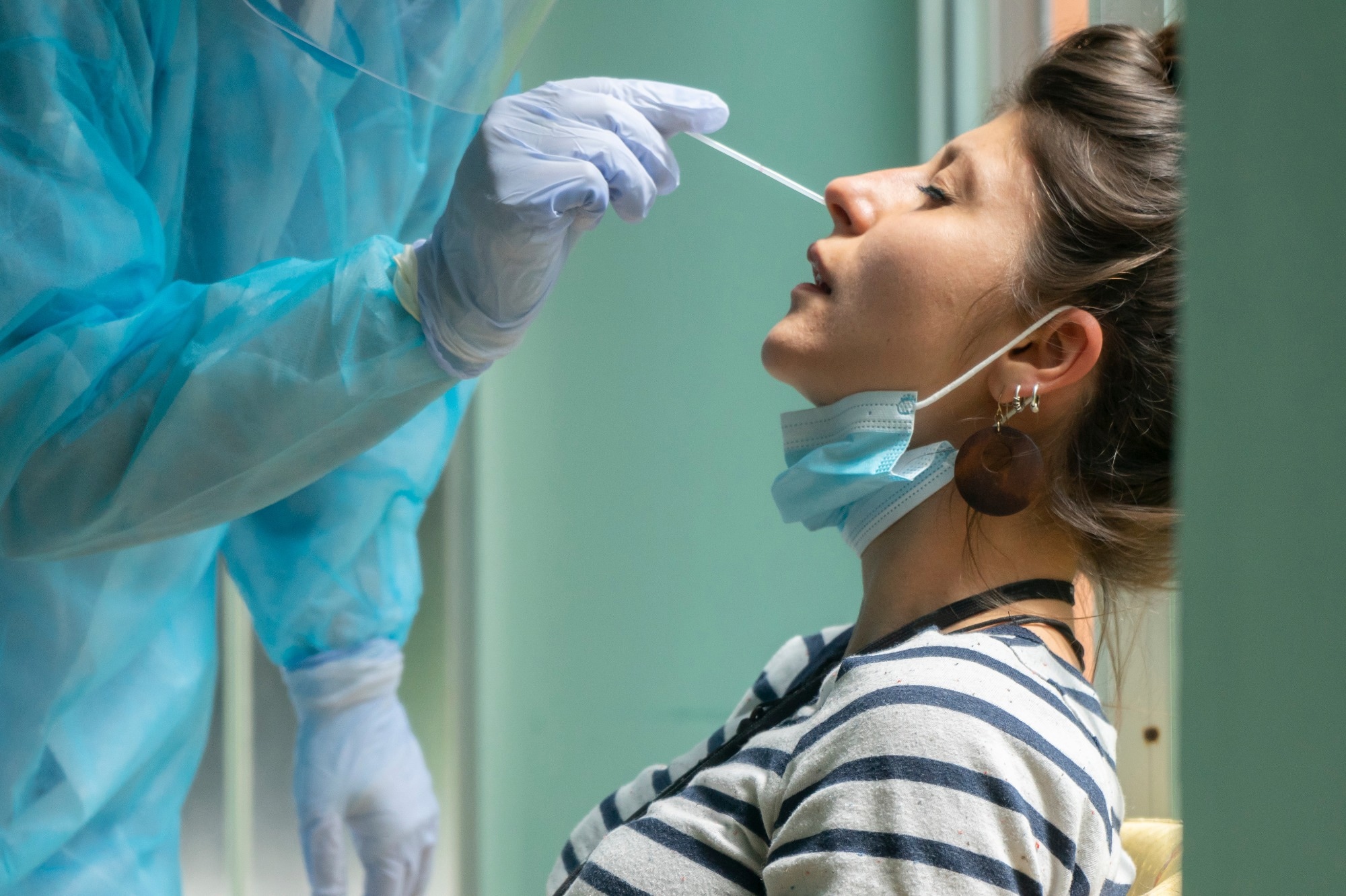The evolution of SARS-CoV-2 has led to the emergence of multiple variants of concern (VOC) with increased transmissibility and immune-evasiveness such as Omicron, leading to an upsurge of SARS-CoV-2 reinfections and difficulties in COVID-19 mitigation globally. Studies have investigated SARS-CoV-2 reinfection frequencies but were restricted to reverse transcriptase polymer chain reaction (RT-PCR) analysis data, in which SARS-CoV-2 Pango lineages are not specified. In addition, a genomic sequencing report is typically categorized as either initial infection or reinfection, but next-generation sequencing (NGS) data for an initial infection and reinfection are rarely reported together for an individual.
 Study: Increasing Cases of SARS-CoV-2 Omicron Reinfection Reveals Ineffective Post-COVID-19 Immunity in Denmark and Conveys the Need for Continued Next-Generation Sequencing. Image Credit: Noiel / Shutterstock
Study: Increasing Cases of SARS-CoV-2 Omicron Reinfection Reveals Ineffective Post-COVID-19 Immunity in Denmark and Conveys the Need for Continued Next-Generation Sequencing. Image Credit: Noiel / Shutterstock

 *Important notice: medRxiv publishes preliminary scientific reports that are not peer-reviewed and, therefore, should not be regarded as conclusive, guide clinical practice/health-related behavior, or treated as established information.
*Important notice: medRxiv publishes preliminary scientific reports that are not peer-reviewed and, therefore, should not be regarded as conclusive, guide clinical practice/health-related behavior, or treated as established information.
About the study
In the present study, researchers characterized SARS-CoV-2 reinfections by variant based on the integration of RT-PCR analysis and next-genome sequencing (NGS) analysis of sequences obtained from Danish SARS-CoV-2-positive individuals and the GISAID (global initiative on sharing avian influenza data) database.
NGS data and clinical metadata of primary SARS-CoV-2 infections and reinfections from the same individual residing in Denmark were analyzed. In total, 21,708 entries of reinfections were available between 1 March 2020 and 28 August 2022, with data on the dates of sample collection about primary SARS-CoV-2 infections and reinfections.
The team documented clinical SARS-CoV-2 metadata as the time points of initial and subsequent SARS-CoV-2 infections to measure the duration between the initial and subsequent SARS-CoV-2 infections. In addition, RT-PCR analysis results and NGS analysis results were available for primary infections and reinfections, respectively.
The team excluded 70 case entries (<one percent of total cases) (n=70) with identical Pango lineages for primary infections and reinfections since such entries could be representative of unresolved SARS-CoV-2 infections instead of reinfections. In addition, Beta, Gamma, and ‘other’ (without universally acceptable Pango nomenclature) VOC data were excluded due to low sequence levels.
Reinfection cases were stratified by variant and subvariant. The GISAID database was accessed for two files: one set of files comprising current metadata for >12 million SARS-CoV-2 sequences and the second set comprising filtered metadata files of only Denmark residents with two associated SARS-CoV-2 infections documented.
Results
Primary infection and reinfection with Omicron (i.e., Omicron-Omicron infections) were reported to occur within a short period (even within three weeks, an average of 22 weeks) than non-Omicron-Omicron infections. Omicron reinfections within ten weeks of initial Omicron infection were largely reported due to BA.1 followed by BA.2.
Reinfection frequency was significantly higher with Omicron (25%, N=1875) after primary infections with any VOC. No Alpha VOC-induced reinfection cases were reported, whereas Delta VOC caused reinfections in 2.3% (n=169) of cases. Pre-Omicron estimates of natural infection-induced immunity were above 90%, which dropped to below 10% in three to four months.
Among individuals with Delta-induced primary infections, reinfections due to Delta variant <1% (n=18) but for Omicron reinfections were 41% (n=3060 cases). Further, reinfections with the same VOC but differing subvariants were only 0.3% (n=24), except for Omicron (4.6%, n=340). 93% of individuals reinfected from March 2020 had Omicron reinfections, indicating that initial SARS-CoV-2 infection with the Wuhan-Hu-1 strain, Alpha VOC, or Delta VOC variant was unable to confer adequate immune protection against reinfections, especially for Omicron reinfections.
Omicron reinfections were reported among 62% (n=211), 20%, (n=68), and 30% (n=102) of cases in which primary SARS-CoV-2 infections were caused by Omicron BA.1, BA.2, and BA.5, respectively, Individuals with primary BA.2 infections demonstrated high reinfection frequencies (38%, n=129) with the Omicron BA.5 subvariant (26%, n=89). The findings indicated that even though the SARS-CoV-2 spike (S) protein of the three Omicron subvariants are similar, differences in the Omicron subvariants were adequate to prevent Omicron BA.1/2 infection-induced nAbs (neutralizing antibodies) from binding with Omicron BA.5 S.
Conclusions
The study findings showed that most SARS-CoV-2 reinfection cases occurred due to Omicron. Omicron reinfections among those with primary Omicron infection happened within a short period, as less as three weeks. The findings indicated that primary infections with non-Omicron VOCs were inadequate in providing immune protection to prevent reinfections with Omicron.
Further, the findings highlight the transmissibility and immune-evasiveness of Omicron and the need for updated SARS-CoV-2 vaccines, continued SARS-CoV-2 surveillance, and SARS-CoV-2 evolutionary assessments to guide policy-making for improved public health across the globe. In addition, the analysis underscores the need for analyzing individual-level NGS data to provide precise estimates of SARS-CoV-2 reinfection risks.

 *Important notice: medRxiv publishes preliminary scientific reports that are not peer-reviewed and, therefore, should not be regarded as conclusive, guide clinical practice/health-related behavior, or treated as established information.
*Important notice: medRxiv publishes preliminary scientific reports that are not peer-reviewed and, therefore, should not be regarded as conclusive, guide clinical practice/health-related behavior, or treated as established information.